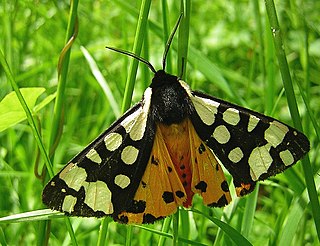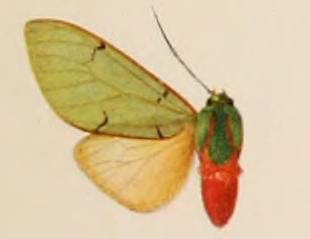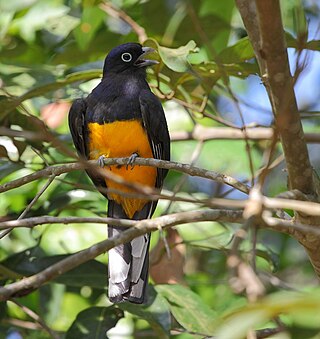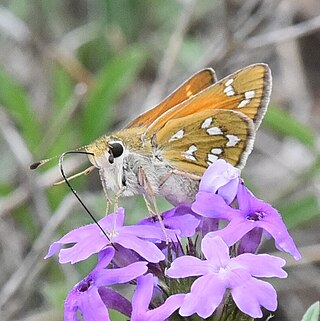
Psychotria viridis, also known as chacruna, chacrona, or chaqruy in the Quechua languages, is a perennial, shrubby flowering plant in the coffee family Rubiaceae. It is a close relative of Psychotria carthagenensis of Ecuador. It is commonly used as an ingredient of ayahuasca, a decoction with a long history of its entheogenic use and its status as a "plant teacher" among the Indigenous peoples of the Amazon rainforest.

The European green toad is a species of true toad found in steppes, mountainous areas, semi-deserts, urban areas and other habitats in mainland Europe, ranging from far eastern France and Denmark to the Balkans, Western Russia and the Caucasus. As historically defined, the species ranged east through the Middle East and Central Asia to western China, Mongolia and northwestern India, and south through Italy and the Mediterranean islands to North Africa.

The Arctiina are a subtribe of moths in the family Erebidae.

Chlorhoda is a genus of moths in the subfamily Arctiinae erected by George Hampson in 1901.

The green-backed trogon, also known as the Amazonian white-tailed trogon, is a bird in the trogon family Trogonidae. It is widely distributed across the Amazon rainforest with a disjunct population on the southeast coast of Brazil. As with all trogons, this species is sexually dimorphic. The male has a yellow belly without a white breastband, a blue head with a pale-blue orbital eye-ring, a blue bill, a green back and a green tail that is mostly white below. The female is duller with a dark grey head, a dark grey back and some black barring beneath the tail.

Coleophora binderella is a moth of the family Coleophoridae. It is found from Scandinavia and Finland to the Iberian Peninsula and Italy, and from Ireland to the Baltic States and Romania.

Antichloris viridis, the satin stowaway or banana moth, is a moth of the family Erebidae. The species was first described by Herbert Druce in 1884. It is found in Colombia, Panama, Nicaragua and Venezuela. It has also been observed a number of times in Great Britain, after being accidentally imported in fruit consignments.
Chlorhoda albolimbata, the flashing footman, is a moth of the subfamily Arctiinae. The species was first described by Hervé de Toulgoët and David T. Goodger in 1985 and it is found in Peru.
Chlorhoda amabilis is a moth of the subfamily Arctiinae first described by William Schaus in 1915. It is found in Brazil.
Chlorhoda metaleuca is a moth of the subfamily Arctiinae first described by William Schaus in 1912. It is found in Costa Rica.
Chlorhoda metamelaena is a moth of the subfamily Arctiinae first described by Paul Dognin in 1913. It is found in Colombia.
Chlorhoda pallens is a moth of the subfamily Arctiinae first described by Hervé de Toulgoët and David T. Goodger in 1985.
Chlorhoda rubricosta is a moth of the subfamily Arctiinae first described by Paul Dognin in 1889. It is found in Ecuador.
Chlorhoda rufolivacea is a moth of the subfamily Arctiinae first described by Seitz in 1919. It is found in Colombia.
Chlorhoda superba is a moth of the subfamily Arctiinae first described by Hervé de Toulgoët and David T. Goodger in 1985. It is found in Peru.
Chlorhoda tricolor is a moth of the subfamily Arctiinae first described by Hervé de Toulgoët in 1982. It is mainly found in Peru.

Chlorhoda viridis is a moth of the subfamily Arctiinae first described by Herbert Druce in 1909. It is found in eastern Peru.
Hypomolis viridis is a moth of the family Erebidae. It was described by Herbert Druce in 1903. It is found in Peru.
Procrimima viridis is a moth in the subfamily Arctiinae. It was described by Druce in 1906. It is found in Peru and Brazil.

Hesperia viridis, the green skipper, is a species of grass skipper in the butterfly family Hesperiidae. It is found in North America.










